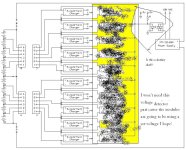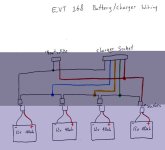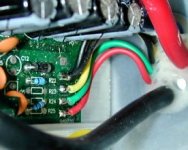Beagle123 said:
Hi all:
I'm trying to devise a circuit to test individual cell voltages. I hope to use this 16 channel multiplexer to cycle through each cell and report each voltage to a microprocessor chip:
http://focus.ti.com/lit/ds/symlink/mpc506.pdf
Does anyone have any ideas?
Ok, glad to see your on that trail Beagle. I've been thinking along the same lines. I don't see any way around the voltage divider, but if there was a multiplexer chip that could pass full pack voltage, you could switch each cell to a differential amp to get the cell voltage referenced to ground.
With voltage dividers, accuracy might be an issue, but then do we really need 1mv accuracy?
If each cell had a A/D converter and communications chip, you might be able to send voltage data over a buss. I think they make chips that do that too. You'd have to level translate the data output to the buss somehow.
I'm still looking for suitable parts and thinking about a topology for this approach.
One workaround for the divider accuracy issue would be to calibrate each cell in software after the circuit was built, so you could use cheap, high tolerance resistors, then calibrate each cell with an expensive Fluke meter afterward. Of course this complicates software, so I'd like to avoid that if possible.
EDIT: I decided to create a new thread for this here:
http://endless-sphere.com/forums/viewtopic.php?f=14&t=3486











